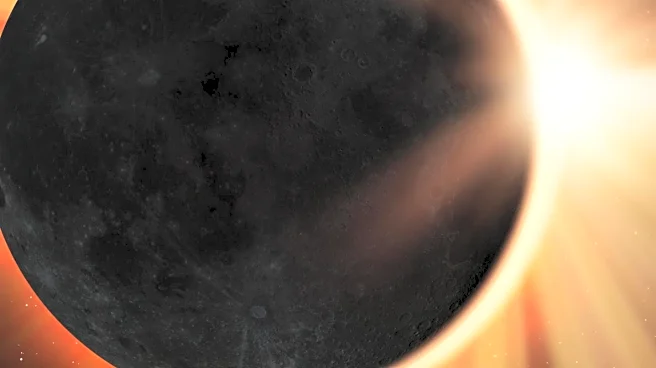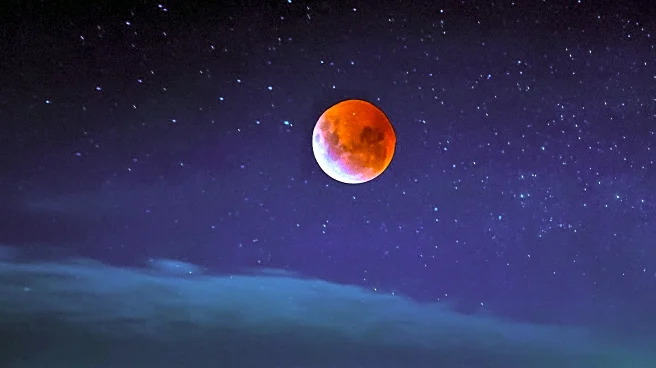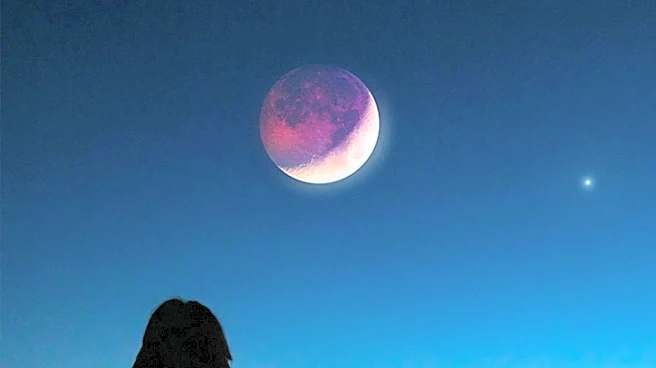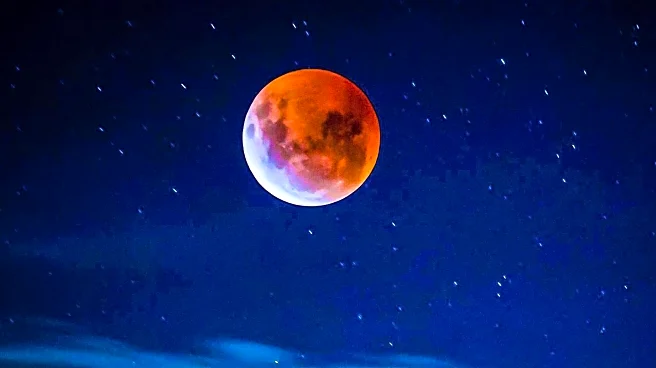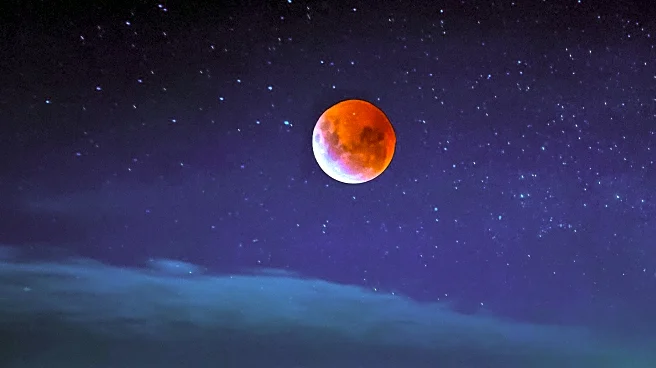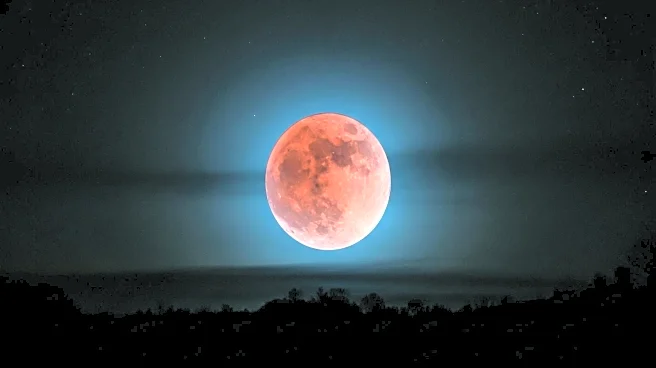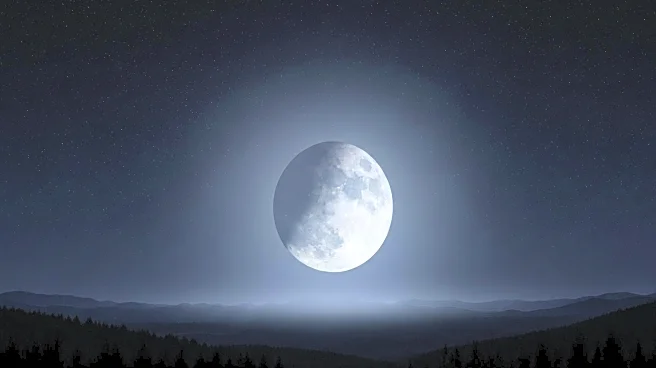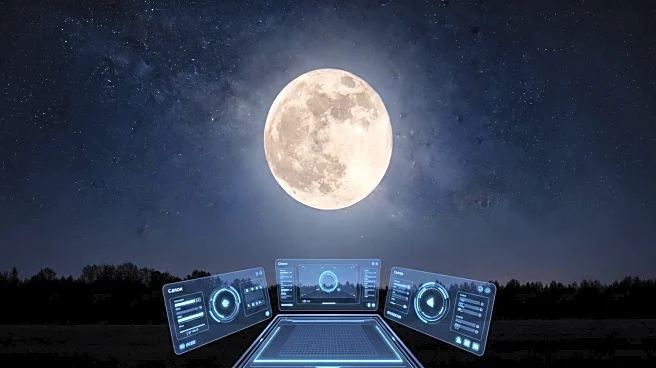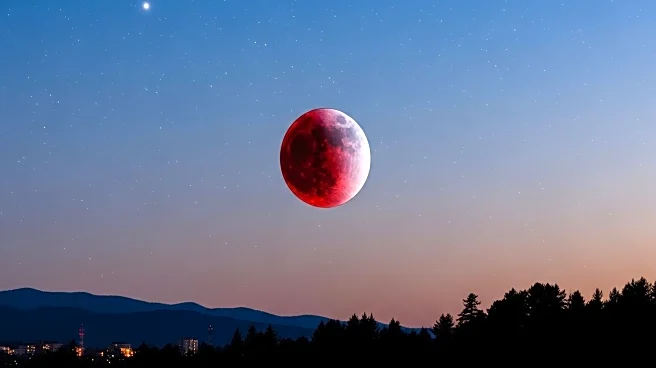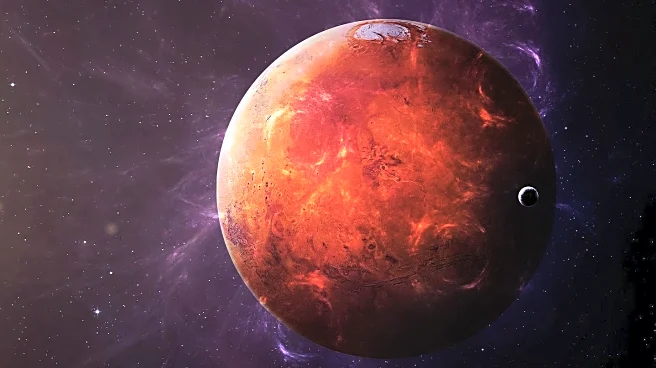What's Happening?
A lunar eclipse will cause September's full moon to appear red, known as a 'blood moon.' This phenomenon occurs when the Earth is positioned between the full moon and the sun, casting a red glow on the moon. The total eclipse will be visible in Asia, parts of East Africa, and Australia, but not in the United States. The peak illumination will occur at 2 p.m. ET, making it impossible for Americans to view the eclipse.
Why It's Important?
Lunar eclipses, particularly blood moons, are significant astronomical events that attract global interest. While this eclipse is not visible in the U.S., it highlights the interconnectedness of global astronomical phenomena and the importance of international collaboration in space observation. The event also serves as a reminder of the natural cycles and celestial mechanics that govern our universe.
What's Next?
Americans will have to wait until March 2026 for the next total lunar eclipse visible from the U.S. Meanwhile, enthusiasts can watch the event via online livestreams provided by platforms like Time and Date. The next full moon, known as the Hunter’s Moon, will occur on October 6, 2025.
